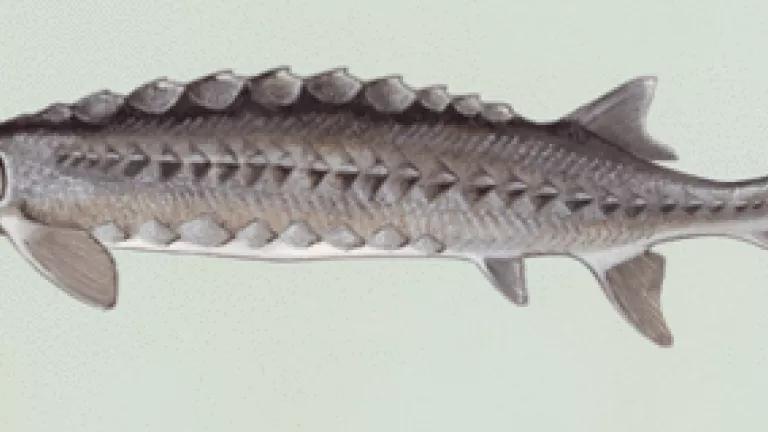
Atlantic sturgeon co-existed with dinosaurs - and they look like it. They can grow up to 14 feet long, weigh over 800 pounds, and have armor-like plates protruding from much of their body. They can also live up to 60 years of age. But modern times have not been kind to this unique fish. And so last month I filed a petition with the federal government to place the Atlantic sturgeon on its list of endangered species.
Atlantic sturgeon once spawned in dozens of rivers from Maine to Florida. Their numbers reached tens of thousands, even hundreds of thousands in some rivers. Today, however, spawning populations in nine U.S. rivers have gone extinct. Most of the remaining rivers have populations so depleted that their numbers cannot be reliably estimated and their present day survival is in question. The Delaware River, once home to the largest Atlantic sturgeon population in the U.S., with an estimated over 180,000 adults, is now estimated to have fewer than 300 adult sturgeon left -- a decline of 99.8 percent.
In 1998, a coastwide fishing moratorium finally stopped more than a century of massive overharvesting for meat and caviar. But this has not proved enough to rescue Atlantic sturgeon, which still confront a gauntlet of other harms, including bycatch in other fisheries (the term bycatch refers to fish caught when targeting different species), pollution, dams, dredging, ship strikes, and warming ocean temperatures, as they traverse coastal waterways and ocean waters. Up and down the coast, in rivers and estuaries where they were once abundant and their spawning runs were once cultural fixtures, Atlantic sturgeon continue to disappear.
However imposing they are as physical specimens, Atlantic sturgeon, like most sturgeons, are actually highly vulnerable to harvesting and habitat damage. They spawn late in life and infrequently, and are very sensitive to low oxygen levels that result from water pollution, as well as certain toxic pollutants. Most of the eight North American species of sturgeon are already listed and therefore protected under the Endangered Species Act (ESA). It is now clear that Atlantic sturgeon need similar protection. And it is noteworthy that the National Marine Fisheries Service (NMFS) actually convened a panel of scientists several years ago to look into whether Atlantic sturgeon should be listed under the ESA. In 2007, the scientists recommended the species should be listed. Needless to say, NMFS has not yet acted on the scientists' recommendations.
If listed, Atlantic sturgeon would be better protected against such threats as bycatch in ocean fisheries, which studies estimate kills more than 1,000 Atlantic sturgeon annually. And depending on the specific river system, they will also be better protected from water pollution, dredging, ship strikes, and/or the adverse effects of dams.
So what happens next? The petition was filed on September 30th. Under the law, NMFS has 90 days to decide whether it believes we've provided substantial information indicating that endangered listing may be warranted. Assuming that NMFS agrees that the petition establishes at least this much, the agency then has 12 months to make a final determination on whether or not to actually list the Atlantic sturgeon. As part of this process, the agency would solicit public comments, and it will be important that everyone who cares about the fate of the species to weigh in.
So we will know more soon. Join me here to follow the new developments, and learn about opportunities for you to join in the effort to save this magnificent fish.

